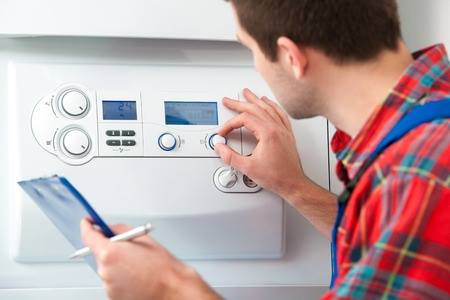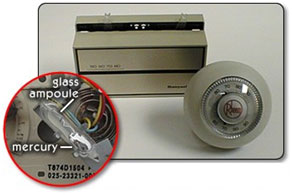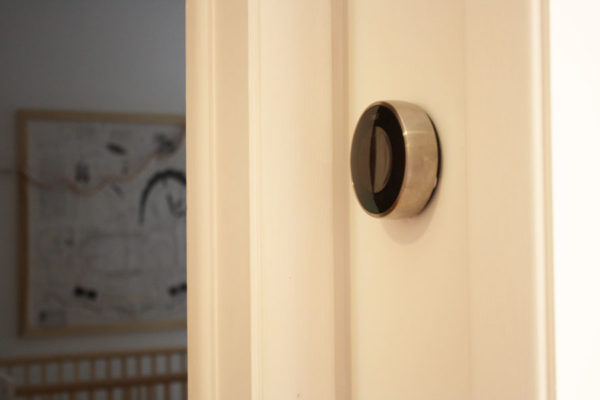Thermostats 101
The thermostat is the unsung hero of your home. Now that we have programmable thermostats, it’s easy to forget that it’s working… that is until it breaks down, or your heating and air conditioning bills go through the roof.
Even so, you could still be making mistakes when setting it up or playing around with it; it’s an easy tool to misunderstand. Here’s the basic information on thermostats, and how you can set it to prevent energy waste.
Thermostat Basics
Basically, the thermostat is a switch that turns the heating and cooling on and off as necessary by sensing the temperature. When the temperature rises or falls below the set level, the thermostat kicks on either the air conditioning or furnace until it’s back to the level it should be.
 The simplicity of this device can cause people to make mistakes. There’s a misconception that raising the temperature warms up your home more quickly. It doesn’t because the furnace doesn’t blast out a hotter air; it will just stay on longer. How quickly it works depends on how well your furnace runs. So if it’s cold outside, don’t crank up the heat right when you walk in – the room will end up too hot later, wasting energy and making you uncomfortable.
The simplicity of this device can cause people to make mistakes. There’s a misconception that raising the temperature warms up your home more quickly. It doesn’t because the furnace doesn’t blast out a hotter air; it will just stay on longer. How quickly it works depends on how well your furnace runs. So if it’s cold outside, don’t crank up the heat right when you walk in – the room will end up too hot later, wasting energy and making you uncomfortable.
You can save on energy in the winter by setting the temperature to 23 degrees when you’re home and lowering it when you leave for work and when everyone’s asleep. If your thermostat is older, you’ll have to adjust it manually before work and bedtime. This can be a mild inconvenience, especially when you forget to change it when you leave your home. If you’re one of the few homes still relying on manual thermostats, consider upgrading to a programmable thermostat.
Programmable Thermostats
Thermostats used to only be manual, with a control based on temperatures gauged by mercury in a glass ampoule. It’s a good thing these are a thing of the past because they were susceptible to extreme temperature fluctuations and required constant manual control. They were also filled with mercury, up to 10 grams of it, making them quite toxic.
 These days, most thermostats are digital, with automatic temperature adjustment settings that allow you to program the times you won’t be at home. If your heating system is older and still uses a mercury-controlled dial, seriously consider having a new thermostat installed – when used properly, automatic temperature adjustments can save you a ton of money. Make sure you find a recycling program near you that can dispose of the mercury for you.
These days, most thermostats are digital, with automatic temperature adjustment settings that allow you to program the times you won’t be at home. If your heating system is older and still uses a mercury-controlled dial, seriously consider having a new thermostat installed – when used properly, automatic temperature adjustments can save you a ton of money. Make sure you find a recycling program near you that can dispose of the mercury for you.
If you’re unfamiliar with programmable thermostats, they can be a little tricky to figure out, but they’re worth it for the energy savings. Let’s say Monday to Friday you leave for work at 8:30 and return at 5:30. You can program your thermostat to raise the temperature setting when you get up at 7, lower again when you head out to work, and then rise again at 5:30. Adjusted well enough, your energy costs will fall an average of 8-10% annually.
The Proper Location
 The thermostat shouldn’t just go anywhere in your home. Where it is can influence how much energy it saves you. Of course, it should be inside your home to prevent the outside temperature from affecting it, but the outdoors can still affect it. If the thermostat is by an open window, the sunlight on the wall can make it think the room is a lot warmer than it actually is, preventing it from kicking on. Vents and drafts can also trick it, so make sure it’s in a well-chosen place. The perfect spot is usually in a main hallway or large open room on the first floor.
The thermostat shouldn’t just go anywhere in your home. Where it is can influence how much energy it saves you. Of course, it should be inside your home to prevent the outside temperature from affecting it, but the outdoors can still affect it. If the thermostat is by an open window, the sunlight on the wall can make it think the room is a lot warmer than it actually is, preventing it from kicking on. Vents and drafts can also trick it, so make sure it’s in a well-chosen place. The perfect spot is usually in a main hallway or large open room on the first floor.
If you’re having trouble getting the settings just right, require an upgrade, or need to move it to a better place in your home, call us! We can make sure your thermostat works to reduce your energy bills and keep your family as comfortable as possible.


